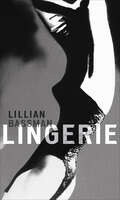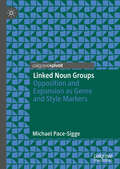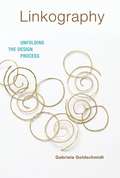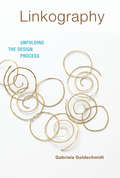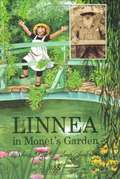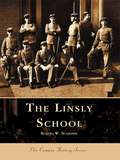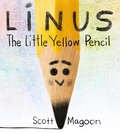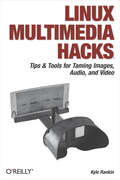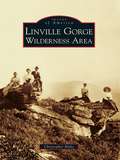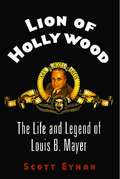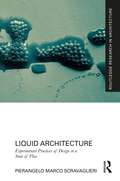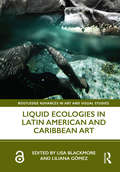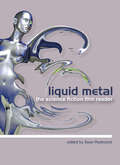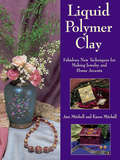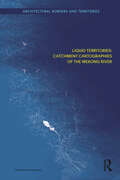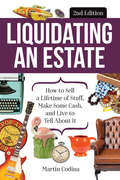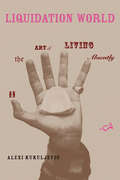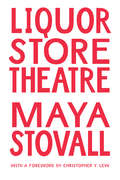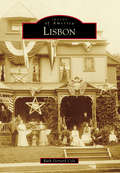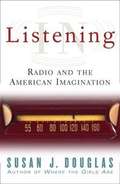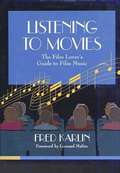- Table View
- List View
Lingerie
by Lillian BassmanStunning images of women in intimate apparel from the artist heralded as &“among the most important fashion photographers of the twentieth century&” (The New York Times). Through the 1950s and the early 1960s, working with that era&’s supermodels, fashion photographer Lillian Bassman created the quintessential modern feminine image of women in their lingerie. As Ginia Bellafante put it in the New York Times recently, &“In place of heavyset women constraining themselves in what was essentially equipment, Ms. Bassman deployed immeasurably lithe models, conveying a world in which women seemed to linger in the pleasures of their own sensuality.&” Fifty years later, these images have lost none of their allure, and the enormous cultural impact of the TV show Mad Men has given them new currency. &“For more than half a century, Lillian Bassman&’s lingerie-themed photographs have seduced the viewer, with their stark contrast, stunningly graceful figure lines, and vivid texture.&” —Vanity Fair
Linked Noun Groups: Opposition and Expansion as Genre and Style Markers
by Michael Pace-SiggeThis book provides a corpus-led analysis of multi-word units (MWUs) in English, specifically fixed pairs of nouns which are linked by a conjunction, such as 'mum and dad', 'bride and groom' and 'law and order'. Crucially, the occurrence pattern of such pairs is dependent on genre, and this book aims to document the structural distribution of some key Linked Noun Groups (LNGs). The author looks at the usage patterns found in a range of poetry and fiction dating from the 17th to 20th century, and also highlights the important role such binomials play in academic English, while acknowledging that they are far less common in casual spoken English. His findings will be highly relevant to students and scholars working in language teaching, stylistics, and language technology (including AI).
Linkography
by Gabriela GoldschmidtThis book presents linkography, a method for the notation and analysis of the design process. Developed by Gabriela Goldschmidt in an attempt to clarify designing, linkography documents how designers think, generate ideas, put them to the test, and combine them into something meaningful. With linkography, Goldschmidt shows that there is a logic to the creative process -- that it is not, as is often supposed, pure magic. Linkography draws on design practice, protocol analysis, and insights from cognitive psychology. Goldschmidt argues that the generation of ideas (and their inspection and adjustment) evolves over a large number of small steps, which she terms design moves. These combine in a network of moves, and the patterns of links in the networks manifest a "good fit," or congruence, among the ideas. Goldschmidt explains what parts of the design process can be observed and measured in a linkograph, describing its features and notation conventions. The most significant elements in a linkograph are critical moves, which are particularly rich in links. Goldschmidt presents studies that show the importance of critical moves in design thinking; describes cases that demonstrate linkography's effectiveness in studying the creative process in design (focusing on the good fit); and offers thirteen linkographic studies conducted by other researchers that show the potential of linkography in design thinking research and beyond. Linkography is the first book-length treatment of an approach to design thinking that has already proved influential in the field.
Linkography: Unfolding the Design Process (Design Thinking, Design Theory)
by Gabriela GoldschmidtThe description of a method for the notation and analysis of the creative process in design, drawing on insights from design practice and cognitive psychology.This book presents linkography, a method for the notation and analysis of the design process. Developed by Gabriela Goldschmidt in an attempt to clarify designing, linkography documents how designers think, generate ideas, put them to the test, and combine them into something meaningful. With linkography, Goldschmidt shows that there is a logic to the creative process—that it is not, as is often supposed, pure magic. Linkography draws on design practice, protocol analysis, and insights from cognitive psychology.Goldschmidt argues that the generation of ideas (and their inspection and adjustment) evolves over a large number of small steps, which she terms design moves. These combine in a network of moves, and the patterns of links in the networks manifest a “good fit,” or congruence, among the ideas. Goldschmidt explains what parts of the design process can be observed and measured in a linkograph, describing its features and notation conventions. The most significant elements in a linkograph are critical moves, which are particularly rich in links. Goldschmidt presents studies that show the importance of critical moves in design thinking; describes cases that demonstrate linkography's effectiveness in studying the creative process in design (focusing on the good fit); and offers thirteen linkographic studies conducted by other researchers that show the potential of linkography in design thinking research and beyond. Linkography is the first book-length treatment of an approach to design thinking that has already proved influential in the field.
Linnea in Monet's Garden
by Cristina Bjork Joan SandinLinnea has visited Claude Monet's garden! In Paris, she got to see many of his actual paintings. Now she understands what it means for a painter to be called an Impressionist.
Linsly School, The
by Robert W. SchrammOlder than the state of West Virginia itself, The Linsly School was the first college preparatory school established west of the Alleghanies. The school was originally founded in 1814 as Wheeling Lancastrian Academy, and became an all-boys institution at the beginning of the Civil War. In 1876, Linsly began serving as a military institution. It is the Linsly doctrine that nothing of substantial or lasting value comes without hard work and sacrifice, and its existence today is testament to that philosophy. Adhering to its motto, "Forward and no retreat!," the school carried itself through almost two centuries of war, pestilence, and economic depressions to become an honored and beloved institution in which generations of students take tremendous pride.Today's non-military, coeducational Linsly School continues to enrich students in grades five through twelve with values of honesty, sportsmanship, hard work, and discipline. Through rare and never-before-seen vintage photographs, The Linsly School chronicles the fascinating and inspiring story of the tribulations and successes of the school itself, and the people who worked, sacrificed, and dreamed to make it happen.
Linus The Little Yellow Pencil
by Scott MagoonLinus and his eraser, Ernie, don't always see eye to eye. But with the family art show drawing near, these two will have to sharpen their collaboration to make something neither one could do on their own!This ode to art by the illustrator of Spoon and Chopsticks points out the power of sharing the creative process and sticking with it.
Linux Multimedia Hacks: Tips & Tools for Taming Images, Audio, and Video
by Kyle RankinThe fact that Linux has more multimedia application choices than Mac OS X and Windows combined may come as a surprise to many, but not to those who know Linux well. In Linux Multimedia Hacks, author Kyle Rankin showcases the best available multimedia tools so you can maximize the entertainment capabilities of your favorite OS. Included are tips and tricks for connecting to iPods, creating MP3s and Oggs, watching and making DVDs, turning your Linux box into a Tivo ala MythTV, and much more.You don't have to be a Linux server guru to make use of this book. Linux Multimedia Hacks takes the best of Linux's multimedia tools and with step-by-step instructions shows even novice users how to do cool and useful things with images, audio, and video. It includes entry level hacks that nearly all Linux users will want, such as installing codecs for audio and video playback and managing thousands of photographs. Later, you'll find hacks that cover a variety of advanced projects, from ripping and organizing media files with metatags, to editing video and audio tracks, to creating your own DVDs. Basic or advanced, each hack stands on its own, so you can feel free to jump around to only the sections that interest you.The book is divided into five easy-to-understand chapters:Images: tips range from basic image edits to automated image manipulationAudio: hacks include audio format conversion and tweaking metadata within audio filesVideo: learn how to covert between video formats, plus how to create your own VCDs and DVDsBroadcast Media: tips include how to access and create you own web broadcasts as well as watch and record TVWeb: learn how to make your multimedia creations available to the worldAs one of the most powerful multimedia platforms around, Linux has far more capabilities and features than meets the eye. This latest Hacks book gives you the technical chops to enjoy them all.
Linville Gorge Wilderness Area
by Christopher BlakeFamed as "the Grand Canyon of the East," the Linville Gorge Wilderness Area is a rugged tract of more than 12,000 acres located in the Blue Ridge Mountains of Western North Carolina. Native Americans once referred to the Linville River as Eeseeoh, or "River of Cliffs," a name that accurately describes the river as it twists its way through the gorge under sheer rock faces and distinctive craggy peaks. Since the Native American ambush of the William Linville hunting party in 1766, the gorge has continued to make headlines with everything from movie filming to fatal accidents and forest fires. Today visitors flock to the natural attraction and enjoy a seemingly pristine, unexplored forest canyon. But the Linville Gorge has much more to offer than just breathtaking scenery. Its rich history has been documented by photographers since the 1870s, and it is through these old photographs that adventure seekers of the past are linked with nature enthusiasts of the present.
Lion of Hollywood: The Life and Legend of Louis B. Mayer
by Scott EymanLion of Hollywood is the definitive biography of Louis B. Mayer, the chief of Metro-Goldwyn-Mayer—MGM—the biggest and most successful film studio of Hollywood&’s Golden Age.An immigrant from tsarist Russia, Mayer began in the film business as an exhibitor but soon migrated to where the action and the power were—Hollywood. Through sheer force of energy and foresight, he turned his own modest studio into MGM, where he became the most powerful man in Hollywood, bending the film business to his will. He made great films, including the fabulous MGM musicals, and he made great stars: Garbo, Gable, Garland, and dozens of others. Through the enormously successful Andy Hardy series, Mayer purveyed family values to America. At the same time, he used his influence to place a federal judge on the bench, pay off local officials, cover up his stars&’ indiscretions and, on occasion, arrange marriages for gay stars. Mayer rose from his impoverished childhood to become at one time the highest-paid executive in America. Despite his power and money, Mayer suffered some significant losses. He had two daughters: Irene, who married David O. Selznick, and Edie, who married producer William Goetz. He would eventually fall out with Edie and divorce his wife, Margaret, ending his life alienated from most of his family. His chief assistant, Irving Thalberg, was his closest business partner, but they quarreled frequently, and Thalberg&’s early death left Mayer without his most trusted associate. As Mayer grew older, his politics became increasingly reactionary, and he found himself politically isolated within Hollywood&’s small conservative community. Lion of Hollywood is a three-dimensional biography of a figure often caricatured and vilified as the paragon of the studio system. Mayer could be arrogant and tyrannical, but under his leadership MGM made such unforgettable films as The Big Parade, Ninotchka, The Wizard of Oz, Meet Me in St. Louis, and An American in Paris. Film historian Scott Eyman interviewed more than 150 people and researched some previously unavailable archives to write this major new biography of a man who defined an industry and an era.
Lipstick Traces
by Greil MarcusGreil Marcus, author of Mystery Train, widely acclaimed as the best book ever written about America as seen through its music, began work on this new book out of a fascination with the Sex Pistols: that scandalous antimusical group, invented in London in 1975 and dead within two years, which sparked the emergence of the culture called punk. âeoeI am an antichrist!âe#157; shouted singer Johnny Rottenâe"where in the world of pop music did that come from? Looking for an answer, with a high sense of the drama of the journey, Marcus takes us down the dark paths of counterhistory, a route of blasphemy, adventure, and surprise. This is no mere search for cultural antecedents. Instead, what Marcus so brilliantly shows is that various kinds of angry, absolute demandsâe"demands on society, art, and all the governing structures of everyday lifeâe"seem to be coded in phrases, images, and actions passed on invisibly, but inevitably, by people quite unaware of each other. Marcus lets us hear strange yet familiar voices: of such heretics as the Brethren of the Free Spirit in medieval Europe and the Ranters in seventeenth-century England; the dadaists in Zurich in 1916 and Berlin in 1918, wearing death masks, chanting glossolalia; one Michel Mourre, who in 1950 took over Easter Mass at Notre-Dame to proclaim the death of God; the Lettrist International and the Situationist International, small groups of Parisâe"based artists and writers surrounding Guy Debord, who produced blank-screen films, prophetic graffiti, and perhaps the most provocative social criticism of the 1950s and âe(tm)60s; the rioting students and workers of May âe(tm)68, scrawling cryptic slogans on city walls and bringing France to a halt; the Sex Pistols in London, recording the savage âeoeAnarchy in the U. K. âe#157; and âeoeGod Save the Queen. âe#157;Although the Sex Pistols shape the beginning and the end of the story, Lipstick Traces is not a book about music; it is about a common voice, discovered and transmitted in many forms. Working from scores of previously unexamined and untranslated essays, manifestos, and filmscripts, from old photographs, dada sound poetry, punk songs, collages, and classic texts from Marx to Henri Lefebvre, Marcus takes us deep behind the acknowledged events of our era, into a hidden tradition of moments that would seem imaginary except for the fact that they are real: a tradition of shared utopias, solitary refusals, impossible demands, and unexplained disappearances. Written with grace and force, humor and an insistent sense of tragedy and danger, Lipstick Traces tells a story as disruptive and compelling as the century itself.
Liquid Architecture: Experimental Practices of Design in a State of Flux (Routledge Research in Architecture)
by Pierangelo Marco ScravaglieriLiquid Architecture challenges the idea of architecture as a fixed, inert container and reconceptualises it as a body whose boundaries are rather blurred and ever-changing. This book moves away from form as the primary driver of spatial protocols and explores what the built environment might look like when viewed through the lenses of a ‘wet ontology’ that is attentive to fluidity, flows and territorial dynamism. A reconfiguration of architectural materials and authorship is thus considered, leading, in turn, to an exploration of the ethical dimensions of co-designing with natural systems (of various viscosities) through liquid paradigms. The book examines a set of principles for practice-led discoveries that incorporate hybrid, mixed media with the author’s intersubjective relationship with liquid matter. Drawing from qualitative-based analytical investigation models, the text allows comprehension of the liquid phenomena via material contextualisation of an ever-becoming research setting. Through a practical and theoretical engagement with the ontology of liquids, the reader is exposed to a range of design-led experiments and creative propositions, visualisation systems, construction, and testing of physical models that collectively translate into a series of novel insights for architectural agendas. This book will be of interest to architecture and design research students and academics because it advocates the need for a more symbiotic and resilient approach to natural systems, which could benefit from the integration of regenerating material flows into our buildings and urban settlements.
Liquid Ecologies in Latin American and Caribbean Art (Routledge Advances in Art and Visual Studies)
by Liliana Gómez Lisa BlackmoreThis interdisciplinary book brings into dialogue research on how different fluids and bodies of water are mobilised as liquid ecologies in the arts in Latin America and the Caribbean. Examining the visual arts, including multimedia installations, performance, photography and film, the chapters place diverse fluids and systems of flow in art historical, ecocritical and cultural analytical contexts. The book will be of interest to scholars of art history, cultural studies, environmental humanities, blue humanities, ecocriticism, Latin American and Caribbean studies, and island studies.
Liquid Metal
by Sean RedmondLiquid Metal brings together 'seminal' essays that have opened up the study of science fiction to serious critical interrogation. Eight distinct sections cover such topics as the cyborg in science fiction; the science fiction city; time travel and the primal scene; science fiction fandom; and the 1950s invasion narratives. Important writings by Susan Sontag, Vivian Sobchack, Steve Neale, J.P. Telotte, Peter Biskind and Constance Penley are included.Contributor List:Alison Landsberg; Andrew Gordon; Barry Keith Grant; Carol Schwartz Ellis; Constance Penley; Donna J. Haraway; Doran Larson; Eric Avila; Henry Jenkins III; Isolde Standish; J.P. Telotte; John Tulloch; Jonathan Bignell; Kin Yuen Wong; Kurt Lancaster; Linda Ruth Williams; Mark Jancovich; Mary Ann Doane; Michael Ryan and Douglas Kellner; Peter Biskind; Peter Hutchings; Scott Bukatman; Sean Redmond; Steve Neale; Susan J. Napier; Susan Sontag; Vivian Sobchack; Warren Buckland; Will Brooker
Liquid Metal: The Science Fiction Film Reader (Film Studies)
by Ed. Redmond SeanLiquid Metal brings together 'seminal' essays that have opened up the study of science fiction to serious critical interrogation. Eight distinct sections cover such topics as the cyborg in science fiction; the science fiction city; time travel and the primal scene; science fiction fandom; and the 1950s invasion narratives. Important writings by Susan Sontag, Vivian Sobchack, Steve Neale, J.P. Telotte, Peter Biskind and Constance Penley are included.
Liquid Polymer Clay: Fabulous New Techniques for Making Jewelry and Home Accents
by Karen Mitchell Ann MitchellLiquid Sculpey is a new medium with endless possibilities, and these two recognized experts have developed a considerable following for their handcrafted jewellery and accessories. Now they share their original sculpting techniques, so everyone can explore the exciting crafting opportunities offered by liquid polymer clay.Each chapter provides information on the development of the techniques and the medium or art application that inspired it. Twenty-two projects teach crafters how to combine polymer clay with beads, metal filigree and antique glass cabochons to create 11 unique jewellery and 11 home decoration items.
Liquid Territories: Catchment Cartographies of the Mekong River (Architectural Borders and Territories)
by Christoforos RomanosIn addition to being a fundamental concept for planning the water infrastructure which supports extensive agricultural economies across Southeast Asia, knowledge of the Mekong River’s hydrological catchments has calibrated the control of land, resources and people. Liquid Territories shows how and why the areal dimensions of the Mekong’s basin, delta and floodplain have become a critical geographic reference for human activities.This book concentrates on the way knowledge of the river’s catchments has been recorded on, and extracted from, maps. Repeatedly drawn by geographers, engineers and cartographers since before the start of European colonization, the book describes how cartographic projections of the basin, delta and floodplain have affected geopolitical strategy, the exercise of military power and anthropogenic modifications of the terrain. Drawing on the discourses of hydrology, geography and cartography, as well as military science, colonial politics and regional planning, the book explains why the spatial articulation of surface water flows is reflected in the configuration of national boundaries, soils and settlements today. Focusing on geographic concepts, the book provides insights into the process of urbanization in Southeast Asia, the region’s colonial and post-colonial history, the Mekong River’s political ecology, the scales of contemporary water management and the design of territory.This book will be relevant to academics who are interested specifically in the Mekong River and Lower Mekong Basin as well as in integrated water management planning. It would be especially relevant to architects, urbanists and landscape architects.
Liquidating an Estate: How to Sell a Lifetime of Stuff, Make Some Cash, and Live to Tell About It
by Martin Codina"What do I do with all this stuff?"Whether it's due to the loss of a loved one, downsizing, or moving by choice or necessity, an increasing number of people are dealing with this burning question.Striking a balance between respect and humor, Liquidating an Estate is loaded with how-to information readers need in order to sell or liquidate the personal property of a loved one, including:common mistakes that will cost you moneytelling the difference between treasure and trashhow to choose an estate sales professional to act as your advocatehow to deal with conflicts among family membershow the sale of even the most common household items can add up to big bucks when sold at an estate salehow scrap gold can be turned into cashwhat to do with fine jewelry and silverhow to understand the art appraisal processa full review of the kinds of items that can be sold at a professionally staged estate salehow to acquire basic antiques and collectibles research skills
Liquidation World: On the Art of Living Absently (Short Circuits)
by Alexi KukuljevicAn examination of the disoriented subject of modernity: a dissolute figure who makes an makes an object of its absence; from Baudelaire to Broodthaers. In Liquidation World, Alexi Kukuljevic examines a distinctive form of subjectivity animating the avant-garde: that of the darkly humorous and utterly disoriented subject of modernity, a dissolute figure that makes an art of its own vacancy, an object of its absence. Shorn of the truly rotten illusion that the world is a fulfilling and meaningful place, these subjects identify themselves by a paradoxical disidentification—through the objects that take their places. They have mastered the art of living absently, of making something with nothing. Traversing their own morbid obsessions, they substitute the nonsensical for sense, the ridiculous for the meaningful. Kukuljevic analyzes a series of artistic practices that illuminate this subjectivity, ranging from Marcel Duchamp's Three Standard Stoppages to Charles Baudelaire's melancholia. He considers the paradox of Duchamp's apparatus in the Stoppages and the strange comedy of Marcel Broodthaers's relation to the readymade; the comic subject in Jacques Vaché and the ridiculous subject in Alfred Jarry; the nihilist in Paul Valéry's Monsieur Teste; Oswald Wiener's interpretation of the dandy; and Charles Baudelaire as a happy melancholic. Along the way, he also touches on the work of Thomas Bernhard, Andy Kaufman, Buster Keaton, and others. Finally, he offers an extended analysis of Danny's escape from his demented father in Stanley Kubrick's The Shining. Each of these subjects is, in Freud's terms, sick—sick in the specific sense that they assume the absence of meaning and the liquidation of value in the world. They concern themselves with art, without assuming its value or meaning. Utterly debased, fundamentally disoriented, they take the void as their medium.
Liquor Store Theatre (Black Outdoors: Innovations in the Poetics of Study)
by Maya StovallFor six years Maya Stovall staged Liquor Store Theatre, a conceptual art and anthropology video project---included in the Whitney Biennial in 2017---in which she danced near the liquor stores in her Detroit neighborhood as a way to start conversations with her neighbors. In this book of the same name, Stovall uses the project as a point of departure for understanding everyday life in Detroit and the possibilities for ethnographic research, art, and knowledge creation. Her conversations with her neighbors—which touch on everything from economics, aesthetics, and sex to the political and economic racism that undergirds Detroit's history—bring to light rarely acknowledged experiences of longtime Detroiters. In these exchanges, Stovall enacts an innovative form of ethnographic engagement that offers new modes of integrating the social sciences with the arts in ways that exceed what either approach can achieve alone.
Lisa Lopes
by Nancy Krulik"Dreams are hopeless aspirations, inhopes of coming true, believe in yourself, the rest is up to me and you." -- "Waterfalls" Tionne "T-Boz" Watkins, Lisa "Left Eye" Lopes, and Rozanda "Chilli" Thomas came together in Atlanta, Georgia, in the early 1990s to form TLC, a group that blended hip-hop, dance, and R&B music so successfully that it went on to be one of the bestselling female groups of all time. This is the story of how Lisa Lopes, the self-proclaimed "crazy" member of TLC, rose above her difficult childhood to attain superstardom. With her funky raps and her vivacious personality, Lisa pursued her dreams and became known as the most energetic member of TLC, who went on to pave the way for many female groups that followed.
Lisbon (Images of America)
by Debra Colleen DaggettChief Warumbee sold Ten Miles Falls in 1678, and a century later, the first Lisbon settlement was established along the Androscoggin River. The water's mammoth power generated thousands of jobs and shaped a way of life for Lisbon's earliest citizens. Near beautiful cascading waterfalls, European immigrants found a magnificent place to share hard work, old-world customs, family traditions, and pride in their new home. Lisbon's history is as intricately woven as its fine Worumbo cloth. The town has suffered ravaging floods and fires, yet it has triumphed with the indomitable spirit of the community. In this volume, vivid photographs tell fascinating stories and carefully preserve the past for future generations.
Lisbon (Images of America)
by Ruth Gerrard ColeCentered in the midst of the Columbiana County hills, Lisbon was founded in 1803. High hopes for growth and prosperity were first realized through industries producing iron, coal, and pottery; however, even with modern inventions, fascinating people, and hopes for a successful canal, the dream of becoming a city never materialized. During the Civil War, Confederate general John Hunt Morgan and his raiders threatened the community with invasion, but he ultimately surrendered to Union forces. Many political careers had links to Lisbon, including those of Congressman and Copperhead Clement Vallandigham, Sen. Marcus Hanna, Pres. William McKinley, and Associate Justice of the Supreme Court John Clarke. Intriguing families such as the "Fighting McCooks" added to the community's history. Victorian homes abound, and today effort is put into the restoration of other Lisbon homes as well as businesses, creating genuine charm and interest while commercial and industrial progress stretches northward.
Listening In: Radio and the American Imagination
by Susan J. DouglasListening In is the first in-depth history of how radio culture and content have kneaded and expanded the American psyche. But Listening In is more than a history. It is also a reconsideration of what listening to radio has done to American culture in the twentieth century and how it has brought a completely new auditory dimension to our lives. Susan Douglas explores how listening has altered our day-to-day experiences and our own generational identities, cultivating different modes of listening in different eras; how radio has shaped our views of race, gender roles, ethnic barriers, family dynamics, leadership, and the generation gap. With her trademark wit, Douglas has created an eminently readable cultural history of radio.
Listening To Movies: The Film Lover's Guide To Film Music
by Fred KarlinThis text is a lay person's guide to the world of film music, from the silent era to the present day. Oscar-winning film composer Fred Karlin describes how music is written and recorded for the movies; who the composers are and how they work with film makers; and the music itself - what to listen for in a film score, and what makes one score better than another.
